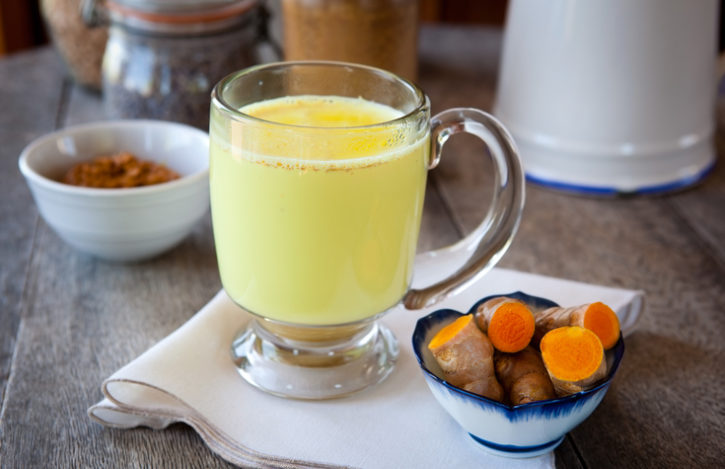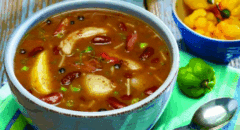 Move over kale, there's a new superfood in town. From celebrities to co-workers and friends, everyone is talkin' turmeric. Why? Scientific evidence has been building around the potential health benefits, including anti-inflammatory properties, of curcumin, a compound in turmeric.
Move over kale, there's a new superfood in town. From celebrities to co-workers and friends, everyone is talkin' turmeric. Why? Scientific evidence has been building around the potential health benefits, including anti-inflammatory properties, of curcumin, a compound in turmeric.
Turmeric has been used for centuries in food preparation and in traditional medicines to treat numerous diseases and conditions.
"Turmeric is a popular spice used for cooking as well as part of Ayurvedic medicine for thousands of years in India," said Vandana Sheth, RD, CDE, spokesperson for the Academy of Nutrition and Dietetics. "Primarily known for its anti-inflammatory properties, turmeric has been used for pain relief and applied topically to help with wound healing."
There are more than 300 compounds found in turmeric but the one that has garnered the most attention is curcumin, which gives turmeric its golden glow. Emerging scientific evidence suggests that curcumin may have anti-inflammatory, anticancer, and antioxidant properties, but these findings have not...
...been confirmed in people. That's why the National Center for Complementary and Integrative Health (NCCIH) a division of the National Institute of Health (NIH) has funded research on curcumin to better understand how turmeric might be used for health purposes.
Makers of supplements have aggressively moved beyond the evidence, touting claims about the benefit of curcumin that have not been substantiated. Moreover, there are unanswered questions regarding how well these supplements are absorbed, the proper dose and overall safety.
For now, the best way to get curcumin is by using turmeric. To maximize the absorption of its' curcumin content try to use turmeric with food containing fat.
The following tips can help you incorporate this golden spice in meals throughout the day.
"Turmeric is really easy to sprinkle on, or stir into, almost any dish throughout the day," said McCormick Corporate Dietitian and cookbook author Dr. Wendy Bazilian, who develops recipes with the McCormick Kitchens. "I like to balance its earthy flavor profile with other spices and herbs. Try pairing turmeric with honey and pumpkin pie spice in a warm golden milk or sprinkle it on roasted sweet potato wedges along with black pepper and a pinch of salt."
Golden milk, also known as turmeric milk, is a source of culinary nostalgia for Sheth. "Drinking turmeric milk is a popular remedy for soothing a cold or a cough. I have many fond childhood memories of drinking a warm and soothing cup of turmeric milk when I was sick," said Sheth.
Traditional golden milk is made by dissolving a tablespoon of ground turmeric into a cup of hot milk. Click here for a modern day version of golden milk made with coconut milk, honey, turmeric, and vanilla. Golden milk makes a great pick-me-up beverage in the morning or a warm and comforting drink at the end of the day.
For a mid-day boost toss green salad with a turmeric vinaigrette made with apple cider vinegar, ginger, and shallots or dip vegetables in a creamy turmeric yogurt dip made with turmeric, sea salt, cinnamon and lemon juice mixed with yogurt.
Spice up dinner with this honey mustard turmeric chicken recipe or simply sprinkle turmeric on any orange food like sweet potatoes, butternut and acorn squash, pumpkin or carrots. Stir turmeric into a tablespoon of Greek-style yogurt and swirl into warm soups like lentil, tomato or split pea or add a sprinkle or two of turmeric to your favorite jarred marinara or spaghetti sauce.
 Constance Brown-Riggs, MSEd, RD, CDE, CDN is a registered dietitian, certified diabetes educator, national speaker and author of The African American Guide to Living Well with Diabetes.. She is Dannon One Yogurt Every Day Nutrition Advisor.
Constance Brown-Riggs, MSEd, RD, CDE, CDN is a registered dietitian, certified diabetes educator, national speaker and author of The African American Guide to Living Well with Diabetes.. She is Dannon One Yogurt Every Day Nutrition Advisor.








